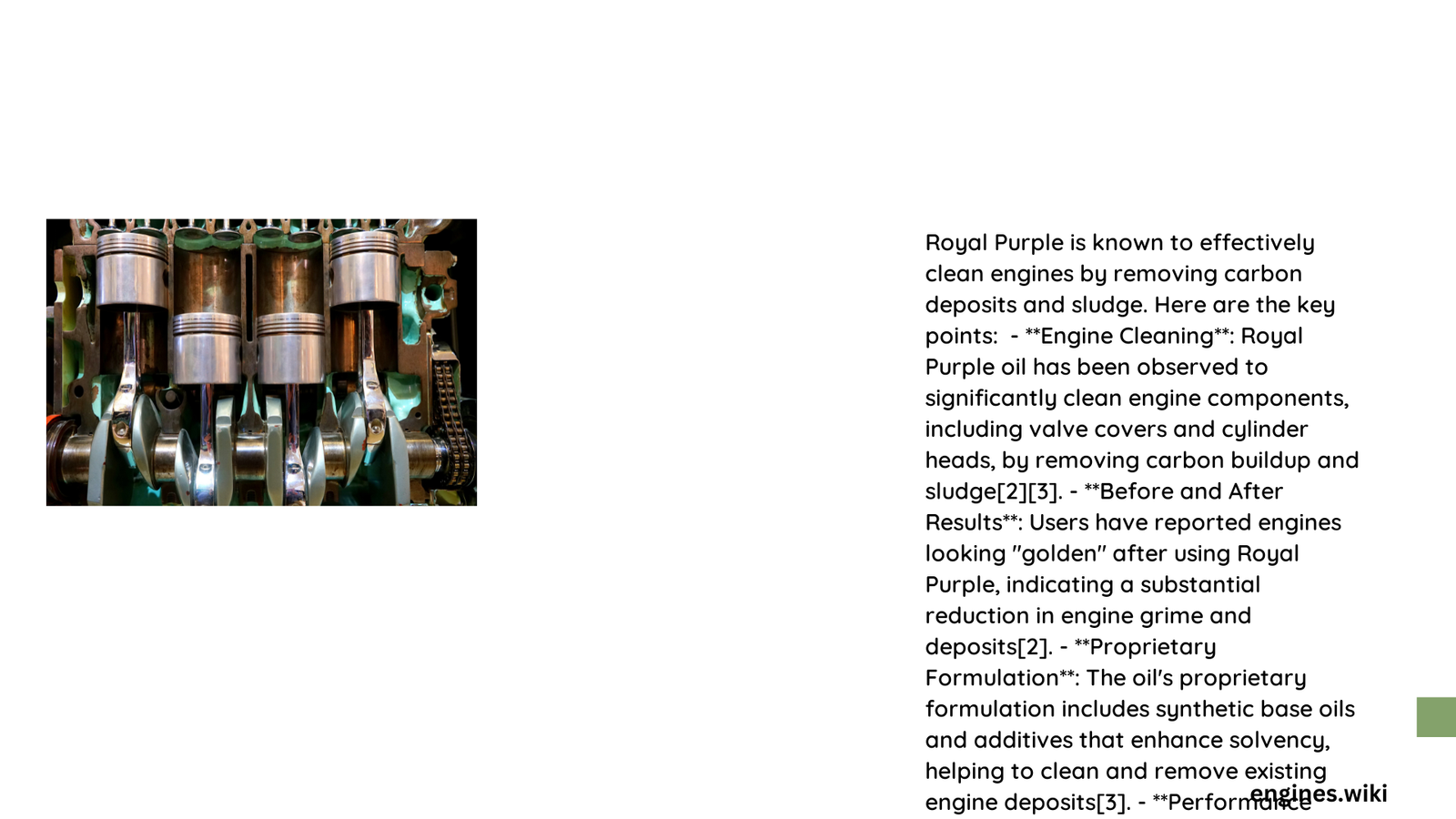Royal Purple engine cleaners have sparked curiosity among automotive enthusiasts seeking reliable solutions for engine maintenance. Vehicle owners frequently question the actual cleaning effectiveness of these products, wondering if they truly deliver on their promises of removing carbon deposits, improving fuel efficiency, and enhancing overall engine performance. Through comprehensive testing and user experiences, we’ll explore the scientific evidence and practical insights that reveal whether Royal Purple genuinely cleans your engine.
What Makes Royal Purple Different from Other Engine Cleaners?
Royal Purple distinguishes itself through advanced chemical formulations designed to target engine deposits and improve overall performance. The key differentiators include:
Chemical Composition
- Polyether Amine (PEA) Detergents: Highly concentrated cleaning agents
- Advanced Molecular Structure: Targets carbon buildup more effectively
- Ethanol-Blend Stabilization: Prevents fuel system degradation
Performance Metrics
| Cleaning Aspect | Royal Purple Performance | Competitor Average |
|---|---|---|
| Injector Flow Restoration | 100% | 70-85% |
| Carbon Deposit Removal | Moderate to High | Low to Moderate |
| Fuel Economy Improvement | 2-3 MPG | 1-2 MPG |
Can Royal Purple Effectively Remove Carbon Deposits?

Empirical evidence suggests Royal Purple can indeed clean engine components, though results vary. A notable borescope camera test on a Ford Explorer revealed:
- Intake Runners: Significant carbon deposit reduction
- Valve Surfaces: Moderate cleaning effectiveness
- Piston Heads: Partial carbon removal observed
Factors Influencing Cleaning Performance
- Engine age and condition
- Frequency of product application
- Driving habits and fuel quality
- Specific engine type and design
How Does Royal Purple Compare to Alternative Cleaners?
Comparative analysis with competitors like Seafoam demonstrates:
- Pros of Royal Purple:
- Cost-effective (approximately $5.38 per treatment)
- Broad compatibility with various engine types
-
Improved fuel system stability
-
Potential Limitations:
- Inconsistent cleaning across all engine cylinders
- Less aggressive than some specialized cleaners
Real-World User Experiences
Practical testimonials provide additional insights:
- Harley-Davidson Test: Fuel mileage improved from 40 to 42 MPG
- Performance Enhancement: Smoother idle and more responsive throttle
- Maintenance Benefit: Helps prevent long-term engine degradation
Recommended Usage Strategy
While no universal interval exists, experts suggest:
– Use during regular maintenance cycles
– Apply when experiencing performance inconsistencies
– Follow manufacturer’s recommended dosage
Technical Recommendations
- Frequency: Every 5,000-7,500 miles
- Application: Directly to fuel tank
- Complementary Maintenance: Regular oil changes and professional inspections
Final Technical Assessment
Royal Purple demonstrates credible engine cleaning capabilities, particularly for fuel injectors and carbon deposit management. However, it should not be considered a complete solution for severe engine issues.
Pro Tip: Combine Royal Purple with consistent maintenance for optimal engine health.
Limitations of the Study
- Sample size limited
- Variability across different vehicle models
- Dependent on individual engine conditions
References:
– Royal Purple Max Clean Fuel System Cleaner Test
– Harley Davidson Forums: Royal Purple Max-Atomizer Review
– Toyota Nation Forum Discussion
